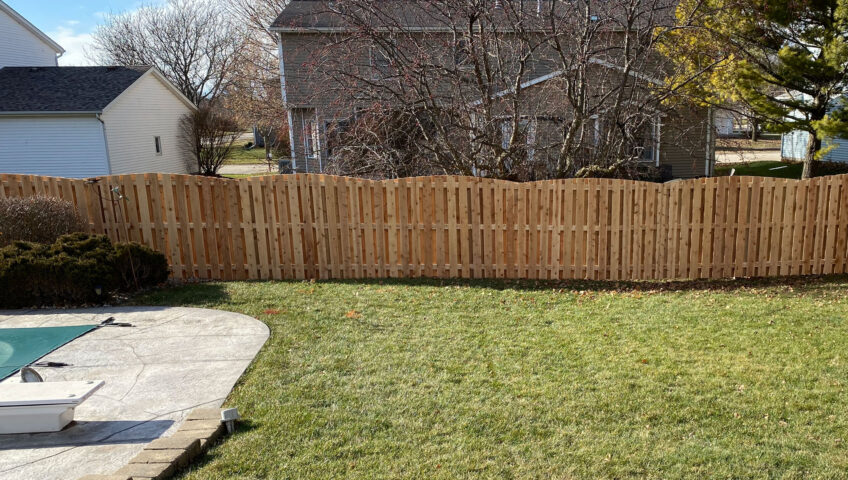
Wood Fencing
WOOD
Treated wood
Pressure- and chemically-treated wood pickets or cedar-style planks are a popular pick for outdoor structures as a whole—gazezbos, decks, pergolas, and more—and assembled as a fence, they offer privacy at a wallet-friendly cost. While this more economical fencing option is a perfect choice for fence posts inserted in the ground (treated wood resists both insects and moisture), its fence pickets have a tendency to warp or twist as quickly as one month after installation.
Maintenance Tip: Seal or paint treated wood for a better look, and replace warped planks as needed.
Cedar
Cedar, the king of backyard privacy fencing, is known for its long-lasting good looks—tight grain, fewer knots, and a desirable red hue—and its promise never to warp or shrink. While cedar also naturally resists decay and insects, this wood is not as impervious to soil as treated wood and will likely rot after several years set in it. If you choose to build a fence from cedar, it’s recommended to install in a concrete base or secure to fence posts that are treated wood. You can customize the planks to create a variety of styles, including saddleback and lattice-topped.
Maintenance Tip: Cedar naturally weathers to a silvery gray, and a fence of this material will require maintenance, including occasional plank replacement. For long-lasting color and protection, apply a penetrating sealant immediately after installation and annually thereafter.
